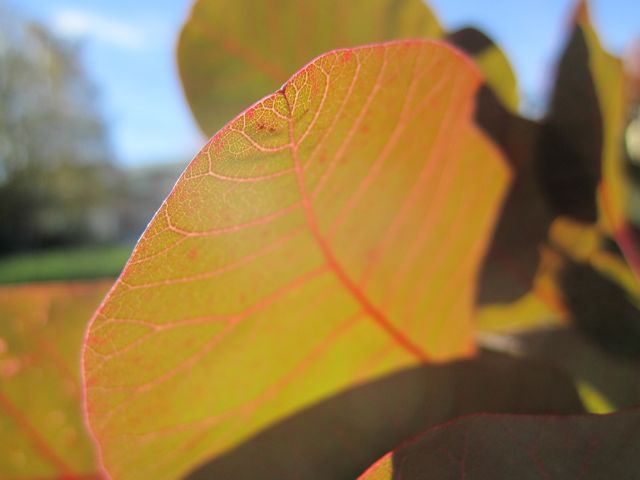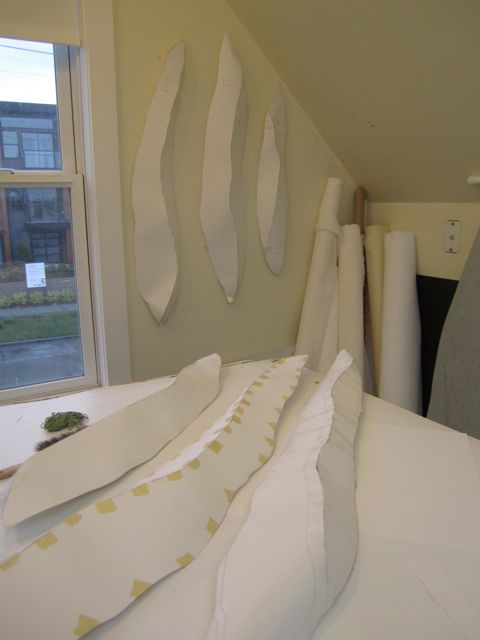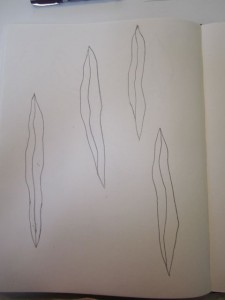 I’ve been in transition lately. Where in the past the crispness in the air of Fall has been invigorating, this year it feels a little mournful. The busy Summer has moved into the new schedule of the school year. My oldest daughter started high school this Fall and both girls are starting earlier in the morning, which is challenging for the whole family.
I’ve been in transition lately. Where in the past the crispness in the air of Fall has been invigorating, this year it feels a little mournful. The busy Summer has moved into the new schedule of the school year. My oldest daughter started high school this Fall and both girls are starting earlier in the morning, which is challenging for the whole family.
The big transition happening in my studio life is that my wonderful, creative, inspiring studio-mate Anne Baumgartner is moving to Los Angeles. Anne is an amazing person and artist and has been an incredible support to me. I know she’ll be popping in and out and, as she says,”still has a Seattle address,” but it won’t be the same. I’ll miss you, Anne, your energy, your dedication, your integrity, your strength, your supportive ear, and your laser-sharp eye!
Not to say I don’t still have amazing studio-mates, Anna McKee, Paul McKee (that’s Paul E. McKee), and Pam Gray. They are all so very different and each of us adds our own special spice to the Easelstan mix. We’ll be having a group show (including Anne) at the Phinney Neighborhood Center in February. Look for news on that in the upcoming months.
 But about those doors and windows. I feel like I’m in transition in my art. I don’t know what the next thing is and it’s an uncomfortable place to be. There’s something different looming ahead but I can’t quite make it out. That feeling of being unsettled in my work bleeds into the rest of my life, I’m a little cranky, a little at loose ends. I’ve been through this before and it helps that I know it will resolve, but it’s still no fun to be here now.
But about those doors and windows. I feel like I’m in transition in my art. I don’t know what the next thing is and it’s an uncomfortable place to be. There’s something different looming ahead but I can’t quite make it out. That feeling of being unsettled in my work bleeds into the rest of my life, I’m a little cranky, a little at loose ends. I’ve been through this before and it helps that I know it will resolve, but it’s still no fun to be here now.
In this unsettled place I figured the best thing to do was to make something, no matter what it is. I got the image of making this hanging piece for Anne as a gift to take with her. The image of the door with a window in it means new beginnings to me, with the window offering a peek at what’s ahead, but the piece has two sides, one looking into the future and one looking into the past. I hope that she finds a place to hang it in her new studio and occasionally thinks of me.
This is where I am now, the door isn’t open yet, but I can begin to make out what’s through it when I look out the window.
























 I’ve been in transition lately. Where in the past the crispness in the air of Fall has been invigorating, this year it feels a little mournful. The busy Summer has moved into the new schedule of the school year. My oldest daughter started high school this Fall and both girls are starting earlier in the morning, which is challenging for the whole family.
I’ve been in transition lately. Where in the past the crispness in the air of Fall has been invigorating, this year it feels a little mournful. The busy Summer has moved into the new schedule of the school year. My oldest daughter started high school this Fall and both girls are starting earlier in the morning, which is challenging for the whole family. But about those doors and windows. I feel like I’m in transition in my art. I don’t know what the next thing is and it’s an uncomfortable place to be. There’s something different looming ahead but I can’t quite make it out. That feeling of being unsettled in my work bleeds into the rest of my life, I’m a little cranky, a little at loose ends. I’ve been through this before and it helps that I know it will resolve, but it’s still no fun to be here now.
But about those doors and windows. I feel like I’m in transition in my art. I don’t know what the next thing is and it’s an uncomfortable place to be. There’s something different looming ahead but I can’t quite make it out. That feeling of being unsettled in my work bleeds into the rest of my life, I’m a little cranky, a little at loose ends. I’ve been through this before and it helps that I know it will resolve, but it’s still no fun to be here now.

